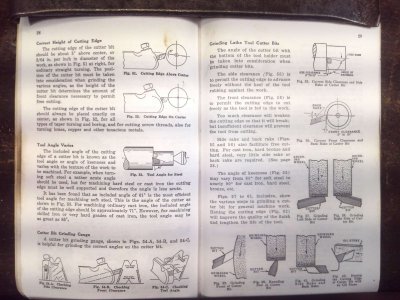I just looked at "How to run a Lathe" I have revision 56 from 1966, it states to set the bit 5 degrees above center. Like a lot of text books there is not an explanation of why or what it effects.. I guess this must be based on some experiments and experience at the time using the south bend lathes and HSS bits. They do mention other cutting bit materials but nothing about carbide insert tools. I do not know how common they were in 1966. The book was originally copyrighted in 1914, no idea how much it was edited in later revisions. Here is a photo of that page, I have a well worn hard copy but pretty sure I have seen soft copies on the internet someplace. I made the little gauge shown and use it often when grinding bits. I looked around on the internet and could not any great info on the internet so I am afraid I do not have a good answer for Jeff.



